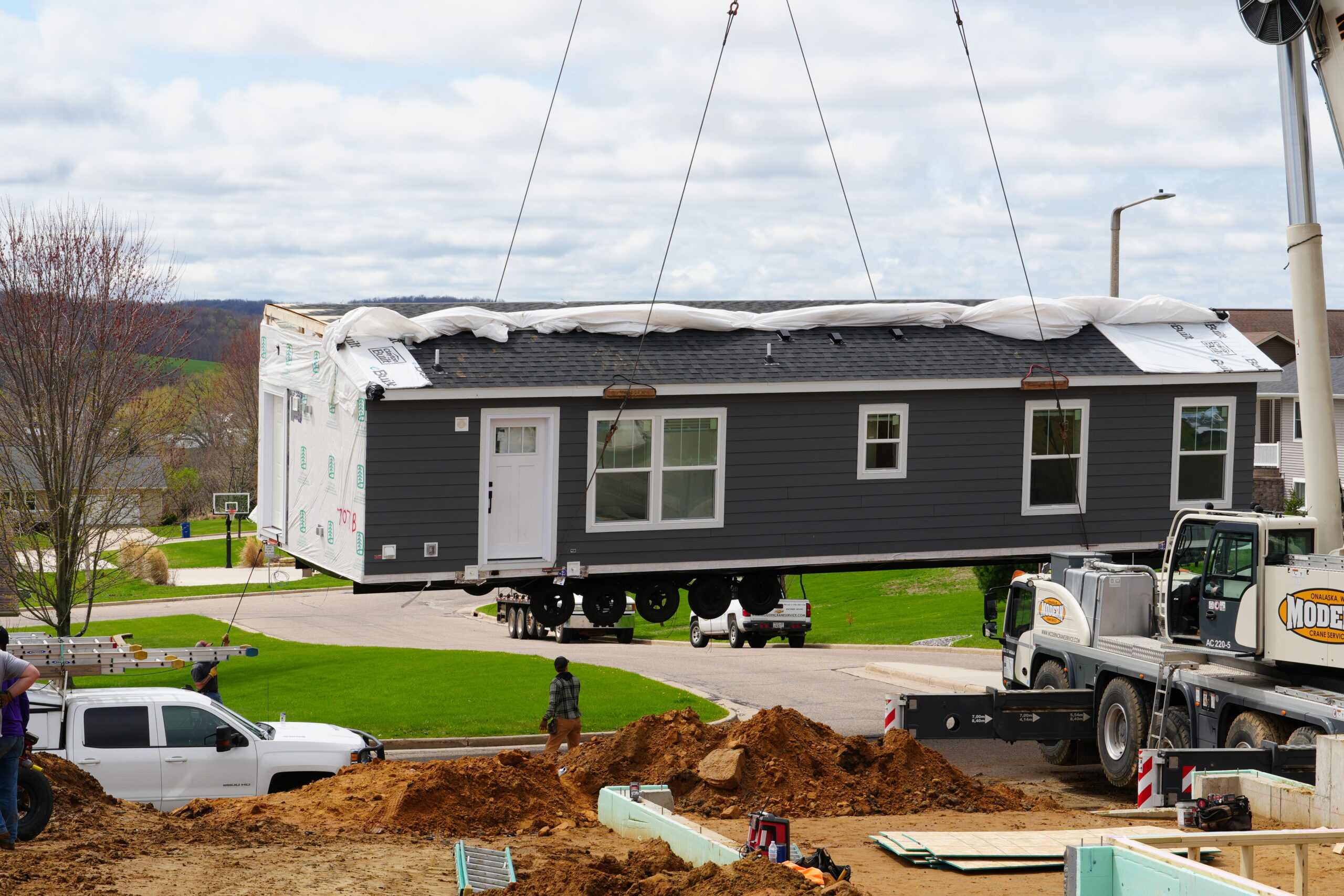The Latest
From Habitat
5 Myths about modular housing

When it comes to affordable housing, misinformation can stand in the way of real progress. Modular homes--, modern, energy-efficient, and built to last, --are proving to be a smart solution for growing communities. Yet, outdated myths continue to cloud public understanding. That’s why Habitat for Humanity is proud to partner with the City of Hillsboro to build 10 new homes. This effort aims to create affordable housing for local workers and strengthen the fabric of the Hillsboro community.
It’s time to clear up the confusion. Here are five of the most common myths about modular housing and the truth that’s helping shape a more sustainable future
Myth 1: Modular homes are the same as manufactured homes.
While the two are often confused, modular homes are permanent structures, built to meet the same local and state building codes as traditional, site-built homes. Manufactured homes (also known as mobile homes) are built on a steel frame to HUD standards and typically aren’t placed on permanent foundations.
This misunderstanding has led to stigma and policy barriers that limit the adoption of modular homes—even though they offer high-quality, long-lasting housing that can help address the affordable housing crisis.
Myth 2: They aren’t as safe.
In reality, modular homes meet or exceed safety and construction standards for traditional homes. These homes are designed to withstand harsh weather, including hurricanes, earthquakes, and fires.
After natural disasters, modular homes are often chosen for rebuilding because they can be constructed quickly without sacrificing quality. The homes in our Hillsboro development, for example, will be CrossMod models, a new category that blends the best of manufactured and site-built housing with a strong emphasis on durability and design.
Myth 3: Modular homes are built with cheap materials.
This couldn’t be further from the truth. Modular homes use the same high-quality materials you’d find in a site-built house. In fact, building components in a factory-controlled environment can actually lead to more precise craftsmanship and less material waste. The result? Strong, energy-efficient homes that meet today’s construction standards, and often exceed them.
Myth 4: They all look the same and don’t fit in.
Today’s modular homes are thoughtfully designed and fully customizable. They can be built in a wide range of architectural styles with custom finishes to complement the surrounding neighborhood. With features like pitched roofs, porches, and high-quality exterior materials, these homes are anything but cookie-cutter.
In our Hillsboro project, CrossMod homes will include design elements that help them blend seamlessly into the existing neighborhood while standing out for all the right reasons.
Myth 5: They don’t last and aren’t environmentally friendly.
Modular homes are built to last through tough winters, hot summers, and everything in between. Thanks to factory precision, these homes often offer better insulation and tighter construction, which means greater energy efficiency and long-term savings for homeowners.
All homes in the Hillsboro development will include solar arrays and backup systems, helping homeowners reduce their energy bills while promoting cleaner, greener living.
Modular housing isn’t just a construction method, it’s a solution. It’s a chance to build smarter, faster, and more affordably. Most importantly, it’s a way to ensure that more families, veterans, first-time buyers, working parents, have access to the safe, beautiful homes they deserve.
To learn more about our Hillsboro development project visit: Habitat for Humanity Hillsboro Housing Development
Partner Family
Stories
Darshida has been working to become a homeowner for years. She is a passionate nurse, a dedicated mother to four boys, and a longtime La Crosse resident. After years of hard work and unforeseen obstacles, Darshida and her family moved into their new home in spring 2023.
